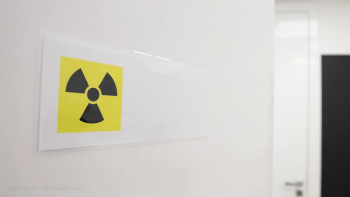
- MHE July 2024
- Volume 34
- Issue 7
Another Toxicity of Cancer Treatment
Time can be especially precious for people with advanced cancer. Researchers and clinicians are beginning to consider “time toxicity” as another aspect of treatment that burdens patients and their loved ones.
A diagnosis of advanced cancer upends the lives of patients and their loved ones. In addition to the severity of the disease and fears of mortality, cancer treatment typically brings with it the heavy, intrusive hand of toxicities. There are the well-chronicled biological toxicities from chemotherapy and radiation treatments, such as hair loss, nausea and fatigue. The cost of cancer treatment and where insurance coverage falls short has been characterized as financial toxicity, which can not only cause dire financial hardship but also affect treatment itself, as people may skip, delay or avoid treatment altogether due to the high cost.
Now researchers and others are beginning to consider another toxicity: time. Cancer treatment is often hugely time-consuming. The hours devoted to treatment, including the time spent traveling to and from the treatment center, can disrupt both work and home life.
Treatment-related time toxicity is relevant for all illnesses and treatment settings, but clinicians and researchers say it looms particularly large for patients with advanced cancer who are facing limited life expectancy and time-consuming treatment.
Researchers can measure and analyze time toxicity in various ways. The main method involves counting the number of days a patient receives healthcare outside of their home,known as healthcare contact days.
In research results reported in April 2024 in JAMA Network Open, lead researcher Arjun Gupta, M.B.B.S., an assistant professor of medicine at the University of Minnesota in Minneapolis, and his co-authors highlighted the underrepresented hardship of time toxicity by evaluating the number of healthcare contact days faced by people with stage 4 non-small cell lung cancer. They identified healthcare contact days through administrative records, and the contact days were used to calculate the weekly percentage of healthcare contact days. The study included nearly 6,000 patients and found the median survival to be approximately three and a half months, and these patients spent 1 in 3 days with healthcare contact.
U-shaped
About one-third of the patients received systemic treatment, had a median survival of about nine months and had a healthcare contact approximately 1 in 4 days. Systemic therapies included traditional cytotoxic chemotherapies, immunotherapies and targeted therapies.
As expected, the trajectory of the weekly percentage of healthcare contact days followed a U-shaped pattern from the time of lung cancer diagnosis to the time of death. Contact days were found to vary with clinical factors, sociodemographic characteristics and treatment type.
Patients receiving targeted therapy had high rates of contact days compared with traditional cytotoxic chemotherapies in the beginning period, but they experienced fewer contact days during the trough of the U-pattern: 10.6% compared with 15.4% with immunotherapy and 17.7% with chemotherapy. The results revealed that even patients who received newer, relatively less-toxic treatments such as immunotherapy and targeted therapy experienced frequent healthcare contact days.
“These findings are sobering and are a call for the oncology community to recognize what patients and care partners go through while receiving cancer care, [as well as] how their lives can be consumed by cancer care, even in the more contemporary era of newer and supposedly less-toxic treatments,” Gupta says.
“It is not surprising that patients who do not receive therapy [experience] more time toxicity. They are likely sicker, as evidenced by their shorter survival and the decision not to proceed with anticancer therapy,” notes Andrew Hertler, M.D., chief medical officer at Evolent, a specialty care management company in Arlington, Virginia, who was not involved in the study. Hertler says that when it comes to overall survival, targeted therapies have greater benefits than immunologic therapies, which have greater benefits than cytotoxic therapies. Treatment advances haven’t eliminated time toxicity. But Hertler says as treatment becomes more effective it tends to decrease time toxicity because patients are living longer.
Other researchers who have studied time toxicity have come to conclusions similar to those reached by Gupta and his colleagues. According to results reported in 2023 in JCO Oncology Practice by first author Vishal R. Patel, a medical student at the Dell Medical School at The University of Texas at Austin, and colleagues (Gupta is the senior author), patients with advanced gastrointestinal cancer who survived less than six months also spent, on average, 1 in 4 days with healthcare contact.Patel and his colleagues found that healthcare contact days typically follow a similar U-shaped pattern of time toxicity, mounting soon after diagnosis and near the end of life.
New immunotherapies and targeted therapies have changed treatment for many advanced cancers, including advanced melanoma. Many of the newer treatments cause less severe side effects than traditional chemotherapy drugs. To see how newer treatments may affect time toxicity, Sarah Bateni, M.D., M.S.W., M.A.S., and colleagues conducted a study of patients with advanced melanoma who received treatment in an earlier era compared with more recent patient data. The results, published last year in JAMA Dermatology, showed an association between improvements in overall survival and the adoption of these newer therapies into practice. However, time toxicity was similar between the compared eras, and substantial time toxicity was observed for patients with stage 4 disease, who had one or more healthcare contact days per week.
Time toxicity seems to be a less relevant consideration if a treatment will lead to a significant survival benefit.In other words, if a treatment can help you live a lot longer, then the time spent dealing with healthcare might not be as important. Still, when discussing treatment options, the amount of time necessary for healthcare appointments is an important factor. Some experts suggest that clinical trials for advanced cancers should include a measure of time toxicity.The data would be helpful to empower patients to make informed decisions on how they want to spend their time.
A report published by Ipsos from a survey of patients with breast cancer revealed that 77% of patients preferred taking a daily oral medication at home rather than traveling to their oncologist’s office to receive a monthly injection. Survey participants reported that each visit to their oncologist required 2.4 hours on average. The top qualities that these patients reported as important when evaluating potential breast cancer treatments were tolerability, impact on quality of life and out-of-pocket costs.
Some time-savers
Hertler says there are already many ways time toxicity can be reduced. For instance, hypofractionation in radiation therapy (higher doses for fewer days) and oral targeted therapies reduce the number of times patients need to go to a clinic. Other time-savers for patients include same-day scheduling of tests and treatments, virtual toxicity checks to eliminate unnecessary in-person appointments and home chemotherapy infusions, all aiming to optimize care while lessening time burdens. Still, there is room for improvement and experts are optimistic about new evidence-based approaches to decrease time toxicity.
Raghav Murali-Ganesh, M.B.B.S., a radiation oncologist and co-founder of Osara Health in Australia, emphasizes the pressing need to address the time toxicity burden faced by patients with advanced lung cancer, which often demands extensive hospitalization to manage treatment-related side effects and disease progression. He says that although remote patient monitoring shows promise in reducing this burden, widespread adoption in clinical practice remains limited due to funding and reimbursement challenges.
Murali-Ganesh says that potential solutions are emerging, based on evidence related to the patterns of potentially preventable emergency department admissions among patients with cancer. Some potential solutions include implementing better and earlier management of cancer-related pain, improving mental healthcare to lower psychosocial distress and encouraging physical activity.
Other solutions involve an earlier institution of palliative care and home hospice, Hertler suggests. “Most patients would prefer to die at home in familiar surroundings with their family rather than in an institution. This has huge potential to decrease [hospitalization] time at the end of life,” he says.
Increased awareness among oncologists and other healthcare providers also plays a role in reducing time toxicity. “As care providers, we may underestimate the time patients spend in our waiting rooms, especially when life-prolonging care may be measured in weeks or, at best, months,” Murali-Ganesh says. “Understanding the trade-offs should be key in designing cancer services that take the whole person into account and not
just the disease.”
Patrica Weiser, Pharm.D.,
Articles in this issue
over 1 year ago
The Doctor Will See You Now, But AI May Be Listening Inover 1 year ago
AHIP 2024over 1 year ago
American Thoracic Society 2024 International Conferenceover 1 year ago
If Walmart Can’t Do It, Who Can?over 1 year ago
Community Health Workers: Getting a Seat at the TableNewsletter
Get the latest industry news, event updates, and more from Managed healthcare Executive.





















































